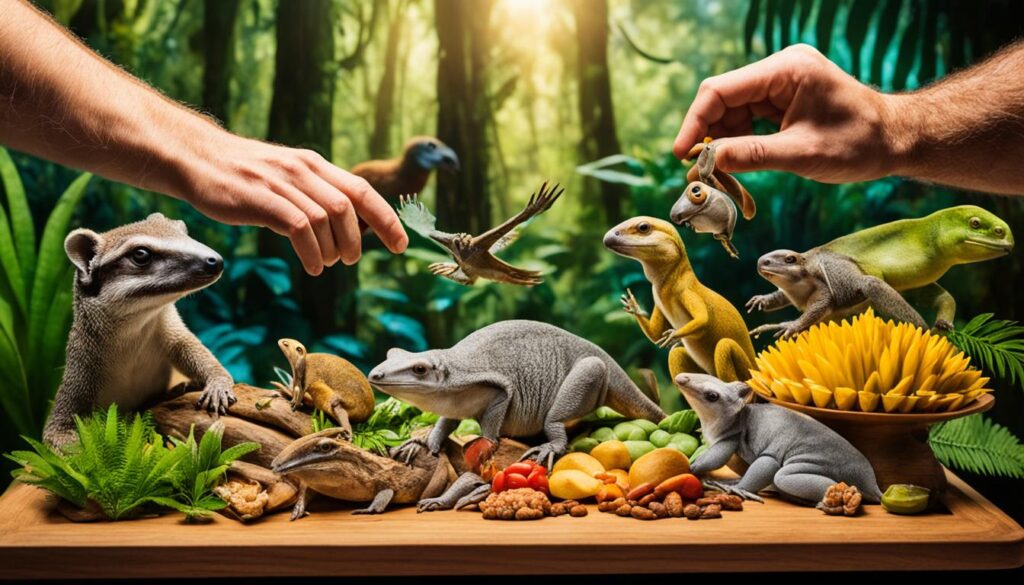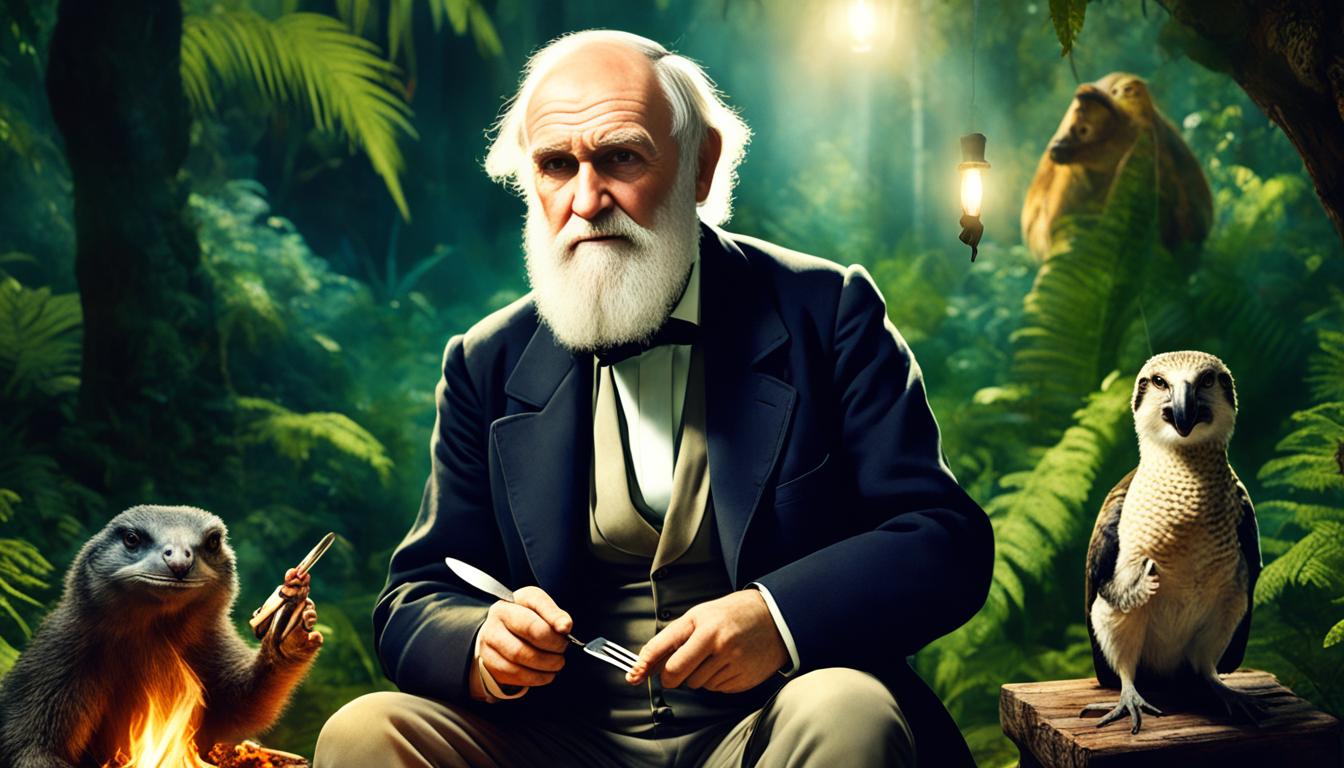Charles Darwin, a famous naturalist and the father of evolution, loved to eat exotic animals during his travels. He was on The Beagle, exploring the world, and enjoyed trying new foods. He ate iguanas, armadillos, puma, and even a sleek brown rodent that he thought was the best meat he ever had.
Darwin’s love for food was linked to his scientific work. He ate the lesser rhea, a big bird that can’t fly, and sent the leftovers to London for more study. This bird is now named Rhea darwinii in his honor. While in the Galapagos Islands, he also ate the giant tortoises he was studying. Sadly, these tortoises are now endangered because people used to eat them a lot.
Darwin’s diet of exotic foods gave him a special view of the animals he met. He saw them both as subjects of study and as tasty foods. His eating habits show us the man behind the big ideas that changed how we see life on Earth.
Key Takeaways
- Charles Darwin ate exotic animals like iguanas, armadillos, and puma during his research expeditions
- He named the lesser rhea bird Rhea darwinii after eating it and sending the remains to London for study
- Darwin’s adventurous diet was closely tied to his scientific curiosity about the animals he encountered
- Eating exotic animals gave Darwin a unique perspective that combined research with culinary appreciation
- Darwin’s eating habits offer an intriguing look at the man behind the revolutionary theory of evolution
Darwin’s Adventurous Eating Habits
Charles Darwin started his love for trying new foods early. At Cambridge University, he joined the Glutton Club. There, he and his friends tried exotic animals like hawk and bittern. But they didn’t like the taste of brown owl.
Even as a teenager, Darwin was curious about the tastes of the creatures he collected. He would sometimes eat the beetles he caught. Once, a bombardier beetle saved itself by spraying acid on Darwin’s hand, stopping him from tasting it.
Darwin kept trying new foods throughout his life. This shows his deep interest in the natural world and his desire to learn more. His unique way of eating shows his curiosity and hands-on approach to science.
Darwin’s Exotic Animal Diet
Charles Darwin’s diet was anything but usual during his expeditions. He was a naturalist with a huge scientific curiosity. He believed tasting exotic animals was key to understanding the world.
He tried foods like iguanas, armadillos, pumas, and rheas on his travels. Eating these animals helped him connect deeply with the creatures he studied. It was a way to learn more about their biology and ecology.

Some think eating what you study helps you get to know it better. Others say Darwin did it to show he was serious about his work. He wanted to stand out among other naturalists.
Darwin’s choice to eat exotic animals shows his deep commitment to science. He wanted to dive fully into the natural world. His diet is proof of his endless curiosity and his role as a leading naturalist.
The Significance of Darwin’s Culinary Curiosity
Charles Darwin’s love for trying new foods was more than just a fun habit. It was a key part of his scientific journey and his way to understand nature. As a leading naturalist, he knew that using all his senses, including taste, helped him learn more about the animals he studied. This approach led to his major discoveries in evolutionary theory.
By eating a wide range of exotic animals, Darwin got to see and feel the unique traits of different species up close. This hands-on method helped him appreciate the complex links between living things and their surroundings. Just like 19th-century New Englanders tried to grasp the mysterious spread of, Darwin’s food adventures were his way to uncover nature’s secrets.
Some of Darwin’s food choices might seem strange or risky today, but they show his deep commitment to science. His boldness in trying new things through food shows the creative spirit of his groundbreaking work. Darwin’s endless quest for knowledge, both in eating and learning, led him to the theory of evolution by natural selection. This idea changed how we see the living world.

Leave a Reply